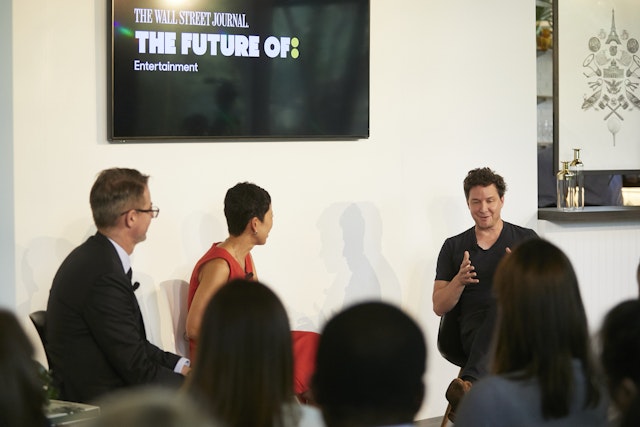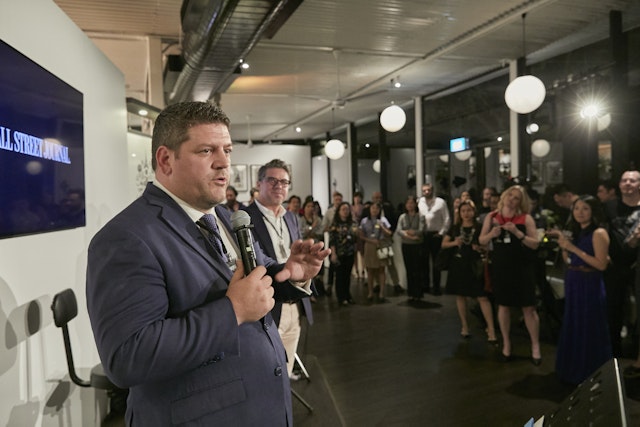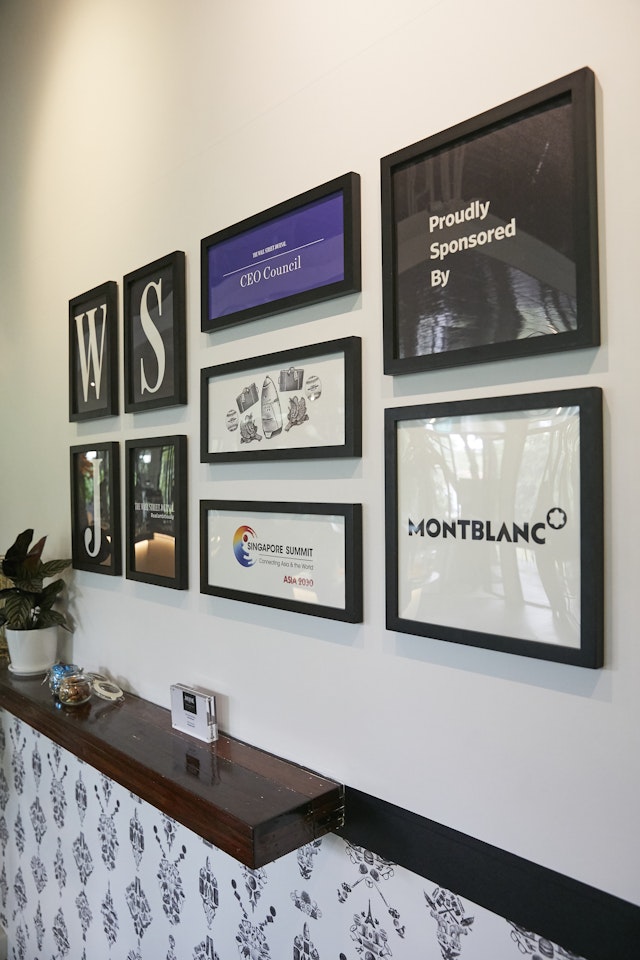How the Wall Street Journal is using its event business to plug the print gap
After shuttering its print editions in the Asia Pacific and Europe, The Wall Street Journal (WSJ) is turning to the events business to plug the revenue gap and retain a physical touch with its readers in these markets with a live journalism experiential event call Journal House.
Having previously held Journal House conferences in Davos during the World Economic Forum and Cannes during the Cannes Lions, the Baron-owned newspaper brought the event to Asia for the first time in September 2019 when it rented out the PS. Cafe in Singapore to host attendees.
Journal House at Davos 2019 from WSJ Conferences on Vimeo.
“Journal Houses are part of our event strategy. It is not the entirety of it, but it is a growing and a really interesting part of our overall event strategy. The idea was born in Davos this year,” says Josh Stinchcomb, the global chief revenue officer at WSJ, when The Drum catches up with him at the venue.
“I think it is a very dynamic form of journalism and, for us, in particular, given that we are a heritage media brand that was built off the back of print and we still have a million print readers that make us the biggest newspaper in the United States, but over time fewer-and-fewer people will reprint.”
He continues: “In this market, we don't have a print product. So, events like this and bringing journalism to life in a physical space creates tangibility for the brand. It brings resonance to the brand.”
The events also allow the WSJ to innovate the way it hosts events for its exclusive CEO and CMO Councils, where rather than just organizing small dinners, WSJ can create a big physical space through Journal House, akin to a private club.
For example, in Davos, Matt Murray, WSJ’s editor-in-chief, interviewed Satya Nadella, the chief executive of Microsoft, which Stinchcomb proudly points out was the one interview Nadella participated in during the WEF. In Cannes, where global CMOs gathered for the ad festival, the Journal House was designed for WSJ’s CMO Council.
In Singapore, the Journal House was held during the busy week leading up to the annual Formula One Grand Prix weekend as events like the Singapore government’s Singapore Summit, Publicis Groupe’s Women’s Forum and Milken Institute’s Asia Summit being held. This meant many global CEOs were in town.
Notable names that dropped by Journal House Singapore included Chase Carey, the chief executive of Formula One, who was on a panel on the future of sports and Indra Nooyi, the former chief executive of PepsiCo, who popped in after speaking at the Women’s Forum.


“This is just another platform to kind of see journalism, and it is a really exciting one because you are almost seeing it being made. You are not just reading the output, you are seeing the interview and hearing the question,” explains Stinchcomb.
“I think it will fill in a gap in the minds of readers and advertisers, in this idea that the journal is this presence. That's just this thing that exists in the real world, and I think that's important. If you are not seeing a brand on the newsstand every day like in the old world, but seeing it in places like this, it serves some of the same purposes. It is awareness.”
He adds: “Singapore is interesting because it is a little bit different. We didn't build a structure, this is a restaurant that we have taken over, but, I think, it actually, design-wise, works quite well. There wasn't a singular festival or conference going on that said, ‘Okay, we're connected to this like the WEF or Cannes Lions.’ Rather, it's a moment where there are four or five really interesting things going on in Singapore.”
Working with brands
Having a physical event like Journal House will go a long way in improving WSJ’s digital advertising business, Stinchcomb believes, because it separates the publisher from pure digital outlets that do not have the weight of tangibility that print used to bring.
It usually encourages brands to become sponsors of Journal Houses and ensure that there is no similar activation for different sponsors.
For example, in Singapore, the main sponsor of the Journal House was luxury brand Mont Blanc, which took out a booth in the cafe to showcase their watches and pens. This guaranteed the brand premium views of its products with so many CEOs at the event.


In Davos, one of the Journal House's sponsors was SAP, whose brief to WSJ was that it wanted to show off its thought leadership experience. In addition, the German software giant had just acquired an experience management space company and wanted to explain why.
So WSJ arranged for its chief executive officer William Lewis to interview SAP’s chief executive officer Bill McDermott as an introduction before the CEO lunch. In a room full of chief executive officers, Lewis and McDermott discussed the future of customer experience.
“We are always very clear about what is an editorial moment and what is a sponsored moment, but we can work with our partners and we have a division called the Trust, which is our in-house creative consultancy, that will work with partners to make sure that their activation is just as interesting as anything else that happens,” explains Stinchcomb.
“Because it needs to be for this audience to come here they expect everything they see to be useful and interesting and high level, so that's the bar that we set.
He continues: “The sponsorships also vary greatly. We are now beginning to think about, could we have an official auto of Journal House? Everywhere we are, that automotive partner is there providing shuttle services. Now that it's become more of a franchise, I think we can think bigger about sponsorship.”
Upcoming plans
Having three Journal Houses under its belt now, Stinchcomb says WSJ is keen to build a structure in Asia the next time it organizes a Journal House in the region, similar to what it did in Davos and Cannes.
Cannes Lions Festival 2019 - Sizzle Reel from WSJ Conferences on Vimeo.
This is because the newspaper is very bullish on the Journal House concept and is looking to do them “bigger and better” and be more ambitious with its sponsorship approach to Journal House.
“We will look for a place where our people already convening, and where can we add value to them by creating a space that's beautiful and relaxing and great food? Where can our editors get access to people for really interesting conversations, and then where do our sponsors have an interest in branding themselves?” explains Stinchcomb.
“The good news is, those three things often overlap. All of those factors fuel all of those things, which is what works so well. Events, generally, are going to be a bigger part of our strategy in Asia, for sure. “
He continues: “Even beyond Journal House, we already do a tech conference in Hong Kong and hold the annual CEO Council meeting in Tokyo. I think you're going to see more Wall Street Journal events in Asia.”
The Drum will look at the topic of publisher collaboration and innovation at the upcoming Programmatic Punch APAC, where a panel will discuss the new types of innovations publishers are adopting.

